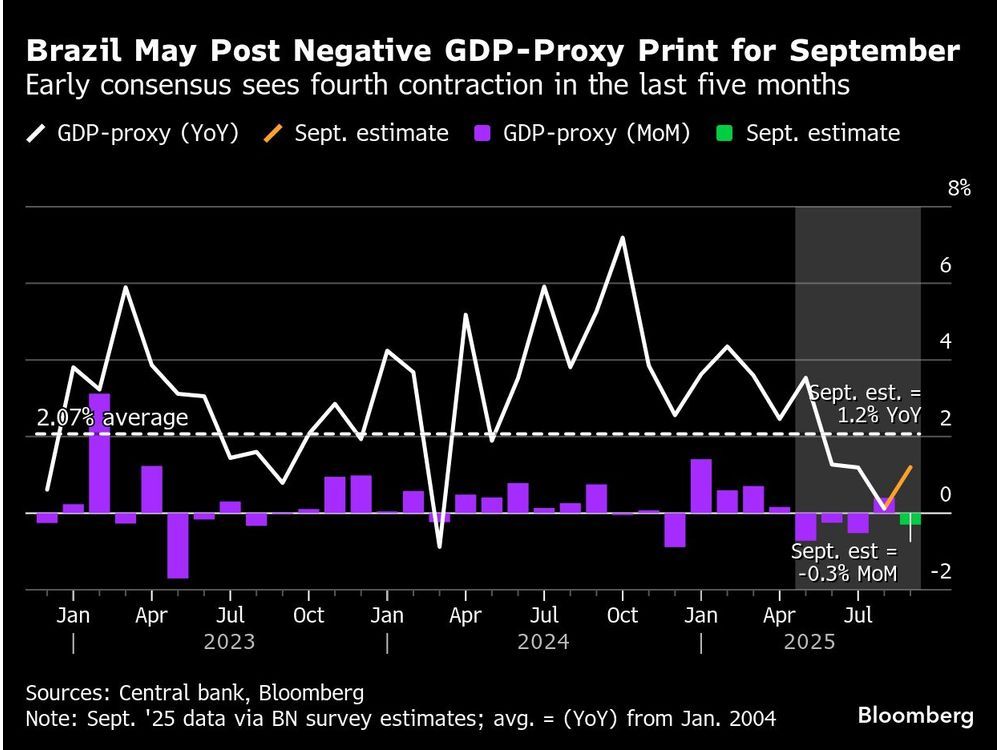Business
Europe Braces for Economic Impact Following Trump’s Trade Policies

European Union officials are expected to revise growth forecasts for 2026 as they assess the economic fallout from trade policies implemented under former President Donald Trump. The new outlook will be released in Brussels on October 23, 2025, highlighting the cumulative effects of US trade threats and increased tariffs, exacerbated by ongoing economic weaknesses in Germany and political instability in France.
The economic projections have already taken a hit following Trump’s controversial announcement of tariffs in May 2025, which sent shockwaves through European markets. While an initial forecast for a 0.9% increase in gross domestic product (GDP) for the euro area was made, officials are now likely to lower their expectations. This is particularly concerning as hopes for a modest rebound to the previously estimated 1.4% growth have diminished, with the European Central Bank (ECB) predicting a more cautious 1% growth rate in its last assessment.
Economic Challenges Across Europe
Trade uncertainty plays a significant role in the current economic landscape. In Germany, Europe’s largest economy, a substantial increase in defense and infrastructure spending was anticipated to drive growth. However, the government’s Council of Economic Experts recently adjusted its growth forecast for 2026 to below 1%, indicating a less robust recovery than initially expected.
France, the second-largest economy in the EU, faces its own set of challenges. Although growth appears resilient, political turbulence is expected to shave approximately 0.5 percentage points off the country’s economic expansion. The Bank of France attributes at least 0.2 percentage points of this uncertainty to ongoing domestic political and budgetary issues. Consequently, France is likely to report the highest deficit within the EU.
On a more positive note, Italy has shown promising signs by reducing its deficit to align with the EU’s 3% ceiling faster than anticipated. This progress may even lead to a ratings upgrade from Moody’s this week, potentially providing a boost to the region’s economic outlook.
Global Economic Context
The implications of Trump’s trade policies extend beyond Europe. According to Bloomberg Economics, euro-area GDP growth is forecast to remain below trend, with a mere 0.1% growth expected in the final quarter of 2025. This continued stagnation is attributed to high levels of uncertainty, increased tariffs, a stronger euro, and heightened global competition, all of which are likely to suppress business investment and external demand.
Meanwhile, global economic indicators are mixed. Japan may be facing its first contraction since early 2024, with an anticipated annualized decline of 2.4% in GDP for the third quarter. In contrast, economies in Peru and Colombia demonstrate resilience, potentially achieving growth despite political challenges.
As Europe navigates these turbulent economic waters, officials are poised to deliver a sobering outlook that reflects the complex interplay of trade policies and local economic conditions. The upcoming reports will be crucial in shaping the region’s response to both immediate and long-term challenges.
-

 Science3 months ago
Science3 months agoToyoake City Proposes Daily Two-Hour Smartphone Use Limit
-

 Top Stories3 months ago
Top Stories3 months agoPedestrian Fatally Injured in Esquimalt Collision on August 14
-

 Health3 months ago
Health3 months agoB.C. Review Reveals Urgent Need for Rare-Disease Drug Reforms
-

 Technology3 months ago
Technology3 months agoDark Adventure Game “Bye Sweet Carole” Set for October Release
-

 World3 months ago
World3 months agoJimmy Lai’s Defense Challenges Charges Under National Security Law
-

 Lifestyle3 months ago
Lifestyle3 months agoVictoria’s Pop-Up Shop Shines Light on B.C.’s Wolf Cull
-

 Technology3 months ago
Technology3 months agoKonami Revives Iconic Metal Gear Solid Delta Ahead of Release
-

 Technology3 months ago
Technology3 months agoApple Expands Self-Service Repair Program to Canada
-

 Technology3 months ago
Technology3 months agoSnapmaker U1 Color 3D Printer Redefines Speed and Sustainability
-

 Technology3 months ago
Technology3 months agoAION Folding Knife: Redefining EDC Design with Premium Materials
-

 Business3 months ago
Business3 months agoGordon Murray Automotive Unveils S1 LM and Le Mans GTR at Monterey
-

 Technology3 months ago
Technology3 months agoSolve Today’s Wordle Challenge: Hints and Answer for August 19









